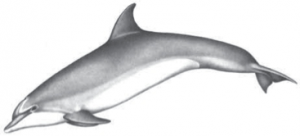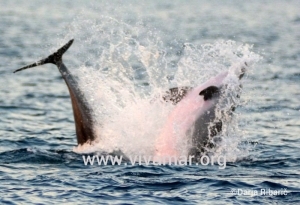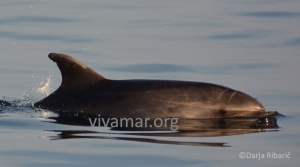Na začetku opisujemo več o klasifikaciji navadne velike pliskavke (Tursios truncatus) v Sloveniji in ob zahodni obali Istre, nižje na tej strani pa najdete sistematiko ostalih morskih sesalcev.
SISTEMATIKA
Red: Cetacea – kiti, delfini in (rjave) pliskavke
Poimenovanje z besedami: »kiti«, »delfini« in »pliskavke« niso najbolj primerne, saj nimajo znanstvenega pomena. V preteklosti so bile vse »velike« živali iz redu Cetacea poimenovane kiti medtem ko so bile “manjše” poimenovane delfini. Nekateri delfini, kot je na primer orka (kit ubijalec) je večja od najmanjših kitov. V tem primeru je prisotna v njihovem imenu celo beseda »kit«. Zato znanstveniki to vrsto raje imenujejo kar orka.
Danes ločimo red Cetacea v dve veliki skupini:
• vosati kiti in
• zobati kiti.
Podred: Odontoceti – zobati kiti
Family: Delphinidae – delfini
Genus: Tursiops
Species: T. truncatus – navadna velika pliskavka
Taksonomija delfinov velika pliskavka je nekoliko nejasna, zaradi svoje geografske variabilnosti. Poznamo več vrst delfinov velika pliskavka iz rodu Tursiops.
Te so:
• navadna velika pliskavka (Tursiops truncatus) Montague 1821,
• indo-pacifiška velika pliskavka (T. aduncus) Ehrenberg 1832 in
• burrunanska velika pliskavka (T. australis) Charleton-Robb 2011.
T. gilli Dall 1873, T. gephyreus Lahille 1908 and T. nuannu Andrews 1911 so nadaljnji sinonimi za veliko pliskavko.
Nadalje je podvrsta velike pliskavke v Črnem morju, ki je morfološko in genetsko drugačna: Tursiops truncatus ponticus.
Vrsta, ki živi v Jadranskem morju in je glavna pri aktivnostih društva Vivamar je navadna velika pliskavka (Tursiops truncatus).
Opis, osnovni podatki
Delfin vrste velika pliskavka (Tursiops truncatus) je eden izmed najbolj znanih in raziskanih vrst morskih sesalcev.
Pri opisu velike pliskavke ima ta:
• kratek in izrazit kljun,
• robustno telo, vretenčaste oblike, ki omogoči živali, da je čim bolj energetsko učinkovita pri plavanju.
• hrbtno plavut z višino približno 23 cm, s srpasto obliko, ki je nameščena na sredini hrbta.
Navadna velika pliskavka (Tursiops truncatus). Vir: Adria Watch
Barva te vrste delfinov je temno do svetlo siva na hrbtni strani, z bledo sivimi boki. Trebuh je bele ali roza barve.
Včasih izgleda v siju sonca barva hrbtne strani nekoliko rjavkasta.
Če primerjamo obarvanost delfinov priobalnih vod in tistih, ki živijo na odprtem morju, so slednji temnejši, a tudi večji in s krajšimi plavutmi (zaradi prilagoditve na hladnejše oceanske vode in s tem zmanjšanja izpostavljene telesne površine zunanji temperaturi vode). Včasih slišimo ribiče, ki so neprestano na morju, da omenijo, še posebej za zimske mesece, da vidijo temnejše in večje delfine kot običajno. Vsekakor je take izjave potrebno preveriti in potrditi, medtem ko tudi ni povsem izključeno, da bi kdaj tako daleč v severno Jadransko morje prišli delfini iz širšega sredozemskega bazena (živali, ki so tranzitne). Širina repne plavuti znaša približno 60cm.
Največja dolžina delfina velika pliskavka je med 3,5 do skoraj 4 m. Samci so nekoliko večji od samic. Odrasle živali tehtajo do 635 kg. Več>



